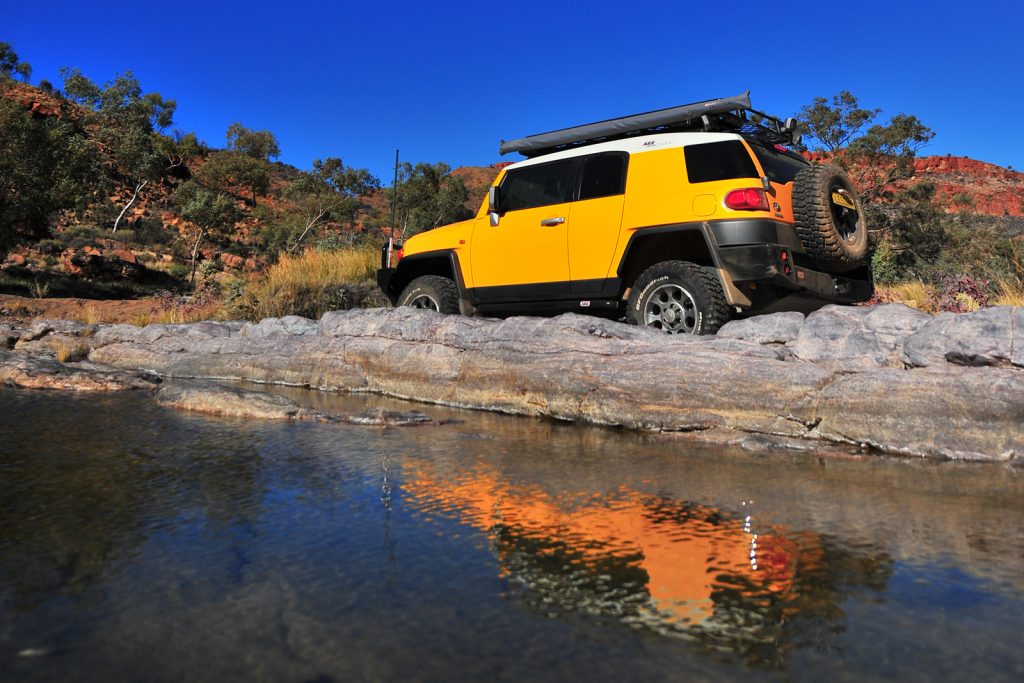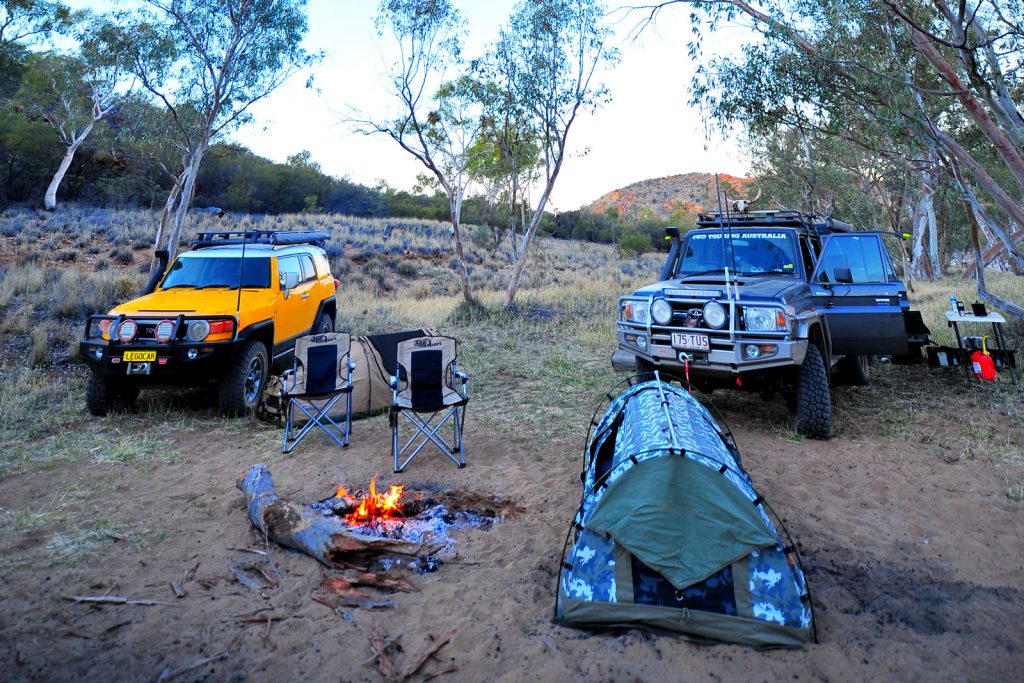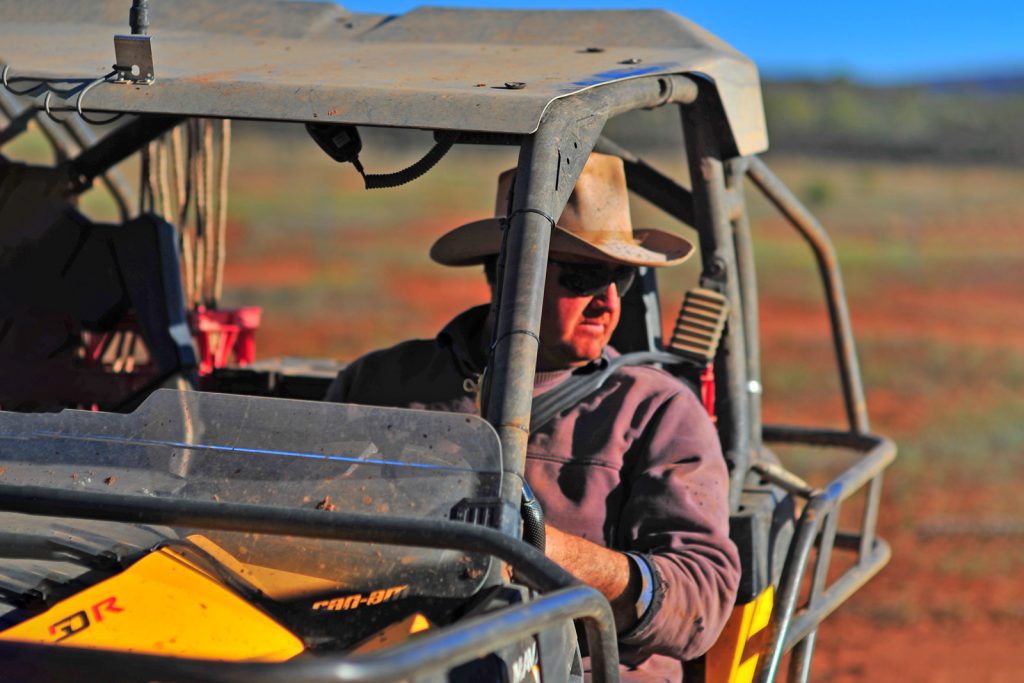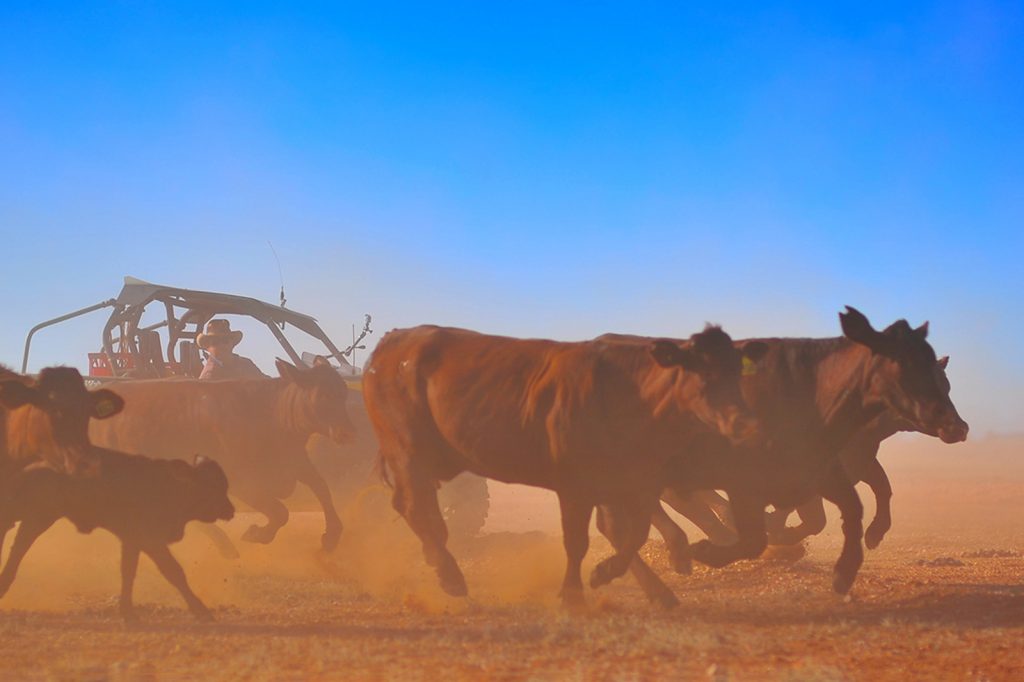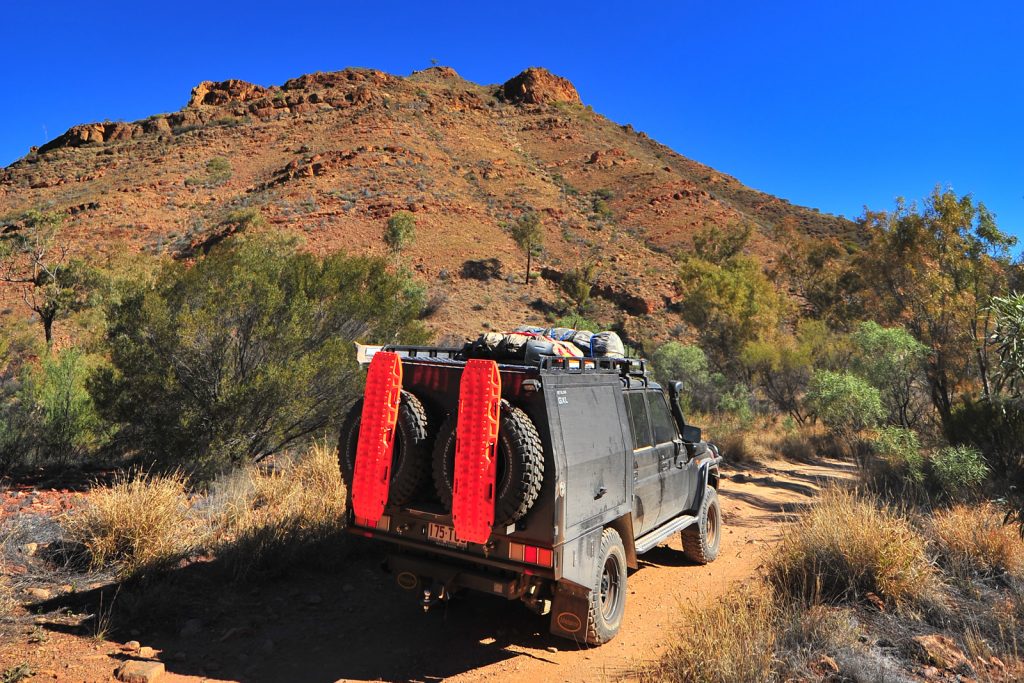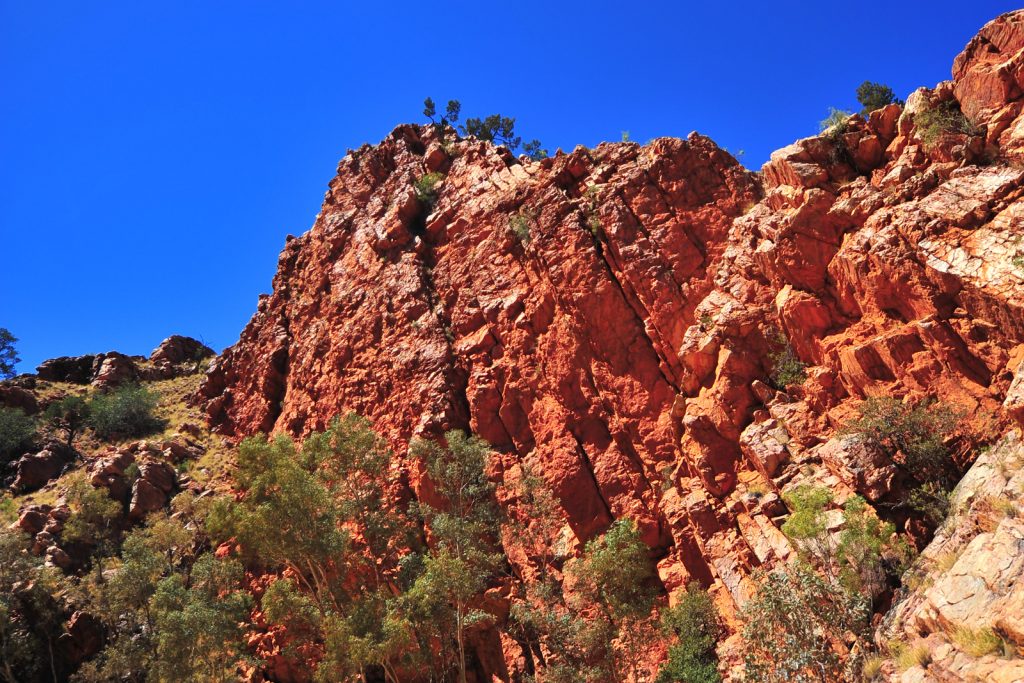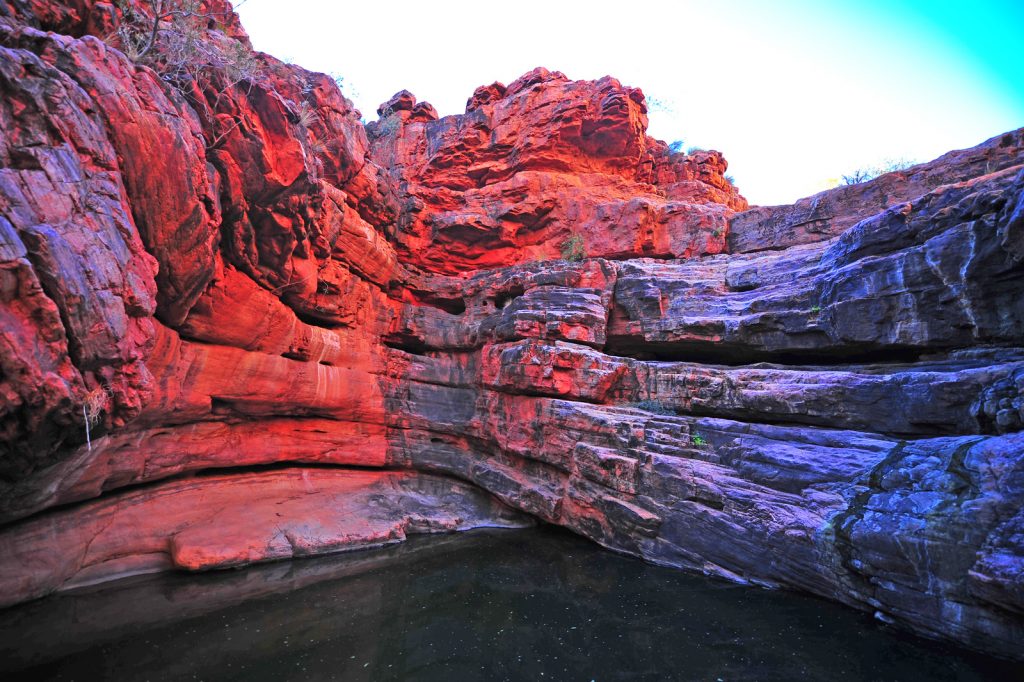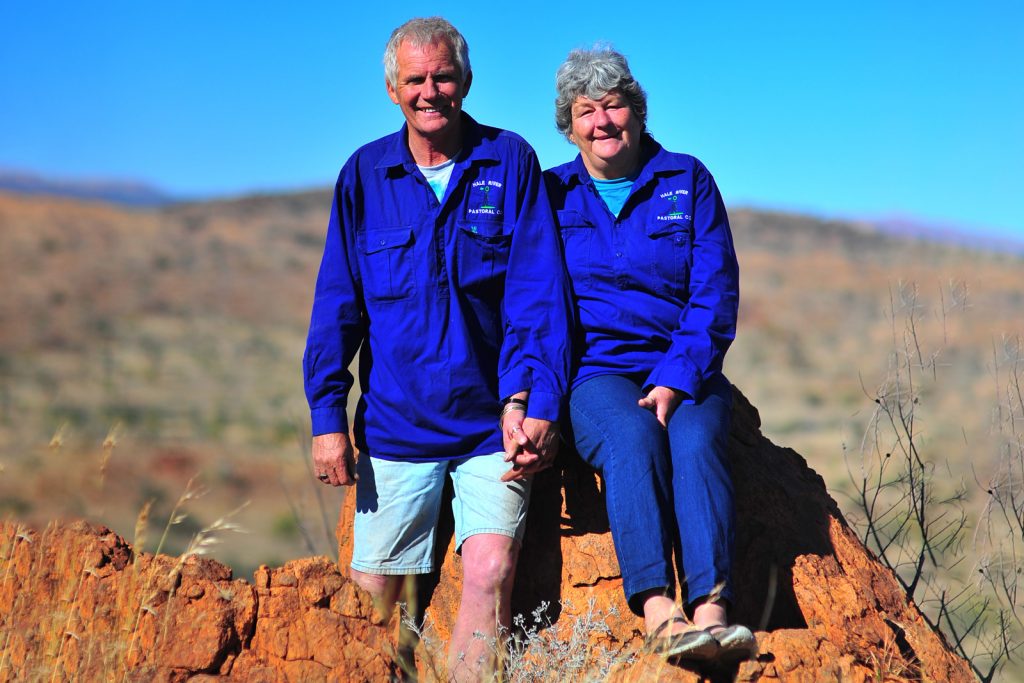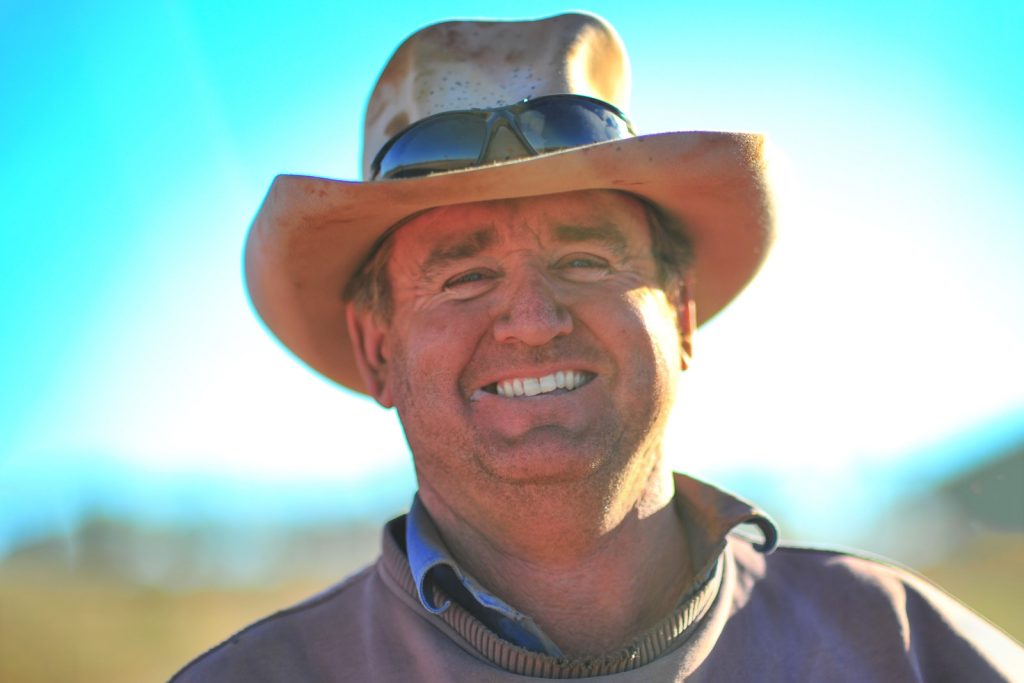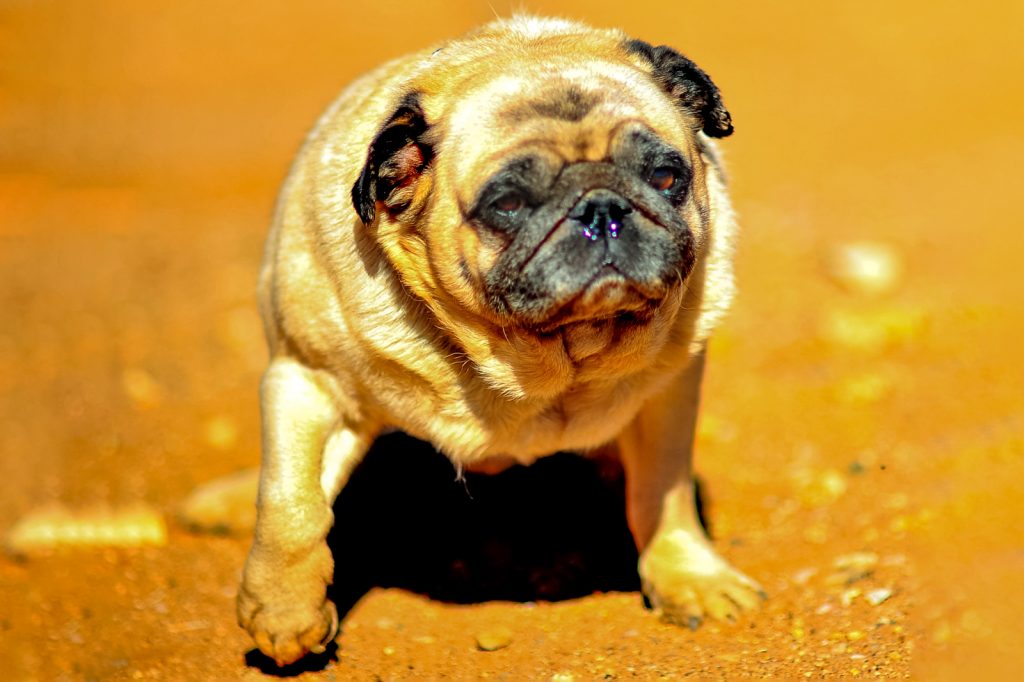The East MacDonnell Ranges are one of the Red Centre’s best-kept secrets.

There are two kinds of adventurers: those who go truly hoping to find adventure and those who go secretly hoping they won’t.
– William Least Heat-Moon, Blue Highways
Only a few days shy of a Simpson Desert crossing and my heart was already pining for wide-open spaces, the bright reds, deep blacks and eerie silence of a desert night.
Alice Springs was closing in on me, the cacophony of fistfights and what passed for traffic to my sand-addled brain was too much.
Surrounded by sprawling red dust in every direction, Alice is a place of indecision, the centre of a web of possibility, the heart of a nation, where all of the veins come eventually.
I wanted an artery into the wilderness. To the north is the endless highway toward Tennant Creek, a netherworld in its own right, a strange roadside attraction, half-remembered.
Some of the most beautiful places I’ve been to in Australia were couched between the hulking shoulders of the West MacDonnell Ranges, straight into the setting sun from the detritus of the Alice: deep cool waterholes that had taken my breath away, literally, on hot summer days.
But east…east was a mystery.
The East MacDonnell Ranges resemble what their western counterparts must have been like thirty years ago, before the road was paved and the bollards were put into place in all of the beautiful swimming holes.
But to see these places as they have been since the beginning of time is a different experience to seeing them roped off, signposted and swarming with busloads of tourists.
Adventure is the product of taking chances – and true adventure occurs when everything doesn’t go right, when experience surmounts safety as the primary concern, when direct contact with the world happens, bringing life and death close together, like two magnets pushing away from each other, yet drawn at the same time.
While I was in Alice, though, I caught up with Matt Wyatt who runs the ARB store, and he was keen to get out in the bush with his FJ Cruiser and show me a few of the local spots.
Dawn rose, and I pointed Ghost’s slowly deteriorating bullhorns into the rising sun down the Ross Highway, followed by Matt’s lemon-yellow Lego car, complete with LEGOCAR rego.

Emily Gap is just out of town, and in the ochre lines stained onto the rock is ancient evidence that we aren’t the first people to wander in the shadows of these garnet stone massifs.
Giant caterpillars are painted in overhanging crevices, sacred for their protein and, one can easily imagine, for their meaning as living symbols of metamorphosis.
Everything that was sacred to the aboriginal always seemed to have two, twin meanings: one utilitarian, one spiritual or symbolic.
The kangaroo was food, but also carried lessons about surviving the desert in its DNA.
The cockatoo was a symbol of flight, of pride, but watching them fly at sunset could give clues to local water sources, as these birds require a constant water supply.
Trephina Gorge is cut into cool red chimneys of rock, but the better drive is out through the dry creek beds to John Hayes Rock Hole.
In wetter times, this is a great swimming hole, but at the end of the touring season the rains are a distant memory, the rock hole more rock than hole, but still worth the drive.
There is a lookout on top of the gorge that is worth it if the mercury isn’t too high on the day. A few kilometres further down the road is the turnoff to N’Dhala Gorge.
We didn’t make it down there this trip. Matt was super keen to show me Ruby Gap, a bit further down the road, the queen of the East MacDonnell destinations.
Here, the Artlunga Tourist Drive begins, a graded gravel road that bucks and drops through the foot swells of the range, a high-frequency wiggle on the map headed straight for the Artlunga Historical Reserve.
While Ruby Gap drew one of the first mining boom crowds to the Northern Territory with red-eyed prospectors seeking a ruby fortune, Artlunga grew up later as a gold mine.
Like most mining reserves, relics are preserved and it is possible to view the past through a blurry lens, to get a sense for the level of hardship that man will endure chasing a dream, particularly if that dream involves gold.
From here, a smaller, tighter, windier track cuts further east toward Ruby Gap. Where you walk into the gorges of the West MacDonnell Ranges, you can drive right through Ruby Gap, which is one of the things that makes this place so special.
You feel so much more a part of the landscape when you can get right into it, when there is nothing separating the rubber on your tyres from the dirt, when you can feel the course river sand of the Hale slipping around your mud treads.

Intriguingly, it wasn’t rubies that brought itinerant treasure hunters to the eponymously named Gap. David Lindsay was exploring the area in 1886 and found rubies sitting on top of the water-washed boulders of the Hale River, sparking a rush to the area.
Within a year hundreds of prospectors were combing the riverbed for the precious stones. A year later, someone in Europe finally questioned the flood of rubies into the market, and the rubies were discovered to be garnets, not nearly as valuable, and the ruby rush collapsed as quickly as it began.
Further east, however, the Artlunga fields were still paying well, driving development of the region.
The track into the park takes longer than it looks like it might on the map, so plan accordingly. The scenery in the park is worth it, though.
A track runs through the gorge, running in and out of the dry riverbed, with towering cliffs and huge boulders strewn throughout the gorge. You can make you way up the river up to a point where it simply becomes impassable; the boulders are too big to traverse.
From here, you can walk up the gorge another couple of kilometres to Glen Annie Gorge, which is a bit more closed in than Ruby Gap. There are plenty of campsites along the riverbed, with shade and absolutely no facilities.
That seems to keep the riffraff out to some extent, and I found it to be wild, quiet and completely uncrowded. The river does have water in it further up the gorge, so the dedicated traveller can usually find a place to wet his feet, but there are no deep holes.
Heading back east down the winding road again, we headed north toward Old Ambalindum Homestead. A station running cattle and horses, it is one of the few working properties in the red centre where you can stay and get a taste of the way of life that this country was built upon.
Tim, who runs the property, came and met us in his Can-Am buggy, smiling like a kid on Christmas morning.
Who wants a ride, he asked.
I put my hand up. And between the flies in my teeth and dust in my eyes, I understood.
Tim doesn’t drive it like the fifty-something guy he looks like. He drives it like a nine-year old with no fear, or no brakes.
We hurtled at break-neck speeds through the property, across ditches that would have swallowed most 4WDs, through bull-dust patches that left me coated in a thick patina of mud-coloured dust.
My eyelashes produced little puffs of effervescent dust every time I blinked.
We pulled up at the edge of a fence just as the brumbies that Tim keeps on the property galloped around a stand of gum trees in the distance, kicking up a backlit amber cloud of dust behind them, cavorting and running with all of their might.
The muscles of these animals were like jerky below the skin, hard and taut, and I understood, in that moment, that peculiar pleasure that Englishmen seem to experience watching thoroughbred horses, and Arabs get when they see a finely bred camel built for the desert.
This was life in its rawest form. All of those tacky country and western belt-buckles with this very scene now made total sense. I had seen the original from which all of those pale brass simulacrums had been cast.
Walking among the throng of horses now, their sweat smell hanging in the air, glistening in their thickly-laid hair, they snorted and kicked each other, and all of that energy was now contained again, the sinews still vibrating with leftover electrical impulses, adrenalin ebbing like a wave running back into the sea.
Now, you want to see something cool, Tim says?

I’m trying to figure out if I’ve been on the station long enough to rock a bolo, and he beckons me back into the Can-Am, which is like getting a friendly wave from the hangman.
A couple of paddocks over, they are mustering a herd of cattle.
We ride up and I can see the bull in the middle of all of the cows, staring with a single telltale heart evil eye over at the Can-Am.
It’s a look I’ve seen before in the eye of a saltwater crocodile waiting, with the patience of half a billion years of evolution, for me to make a false move, to look away for too long.
His shoulders are a solid two feet above every other creature, and he moves with a sluggish loping gait that belies the glaring fact that he could turn me into ground meat quicker than I could do the same to him.
Now, you boys stand still and they shouldn’t run into you, Tim says to me and the film crew as we set up, unaware until now that Tim and two jackeroos on quadbikes are about to run the cattle straight into us as quickly and efficiently as they can.
Anything for the shot, I mean, trampled would make a good story. Just keep an eye on that bull, I keep telling myself.
Meanwhile, he was watching me with an eye like Mona Lisa’s – it seemed to follow me no matter where I stood.
Within a few moments the dust was blocking out the sun. The only sound the whining stop-start of the quad-bikes, the ground actually moving as the cattle circled around us.
Again, that animal smell, sweeter than the horses, mixed with that chalky dust in my nose, my eyes, my ears.
In a few more years, once my nose and ear hair really starts to settle in, I might be better suited for station life.
For now, I’ll hang my bullhorns on my LandCruiser and head back into the sunset, leaving the dust behind me, leaving Tim’s Akubra paradise behind, looking for a swimming hole to wash off all this dust.
FAST FACTS
EMILY GAP is located approximately 10km east of Alice Springs, can be reached in 15 minutes via the Ross Highway, and is one of the first features you come across as you enter the East MacDonnell Ranges. It’s an important cultural site to the local Arrernte people and contains sacred sites and rock paintings.
JOHN HAYES ROCK HOLE is located in the Trephina Gorge area, 85km east of Alice Springs. Access is via the Ross Highway, and the John Hayes Rock Hole track is 4WD access only.
RUBY GAP is 150km east of Alice Springs and is accessed via the Arltunga Historical Reserve. High clearance 4WD vehicles are essential and heavy rains can make the tracks impassable. Camping is available nearby on the banks of the Hale River.
OLD AMBALINDUM STATION is a working cattle station set on over 3,000 square kilometres of land, 135km northeast of Alice Springs. The station lays claim to hundreds of kilometres of graded access roads and rocky tracks, meaning there’s plenty to explore for all drivers.

